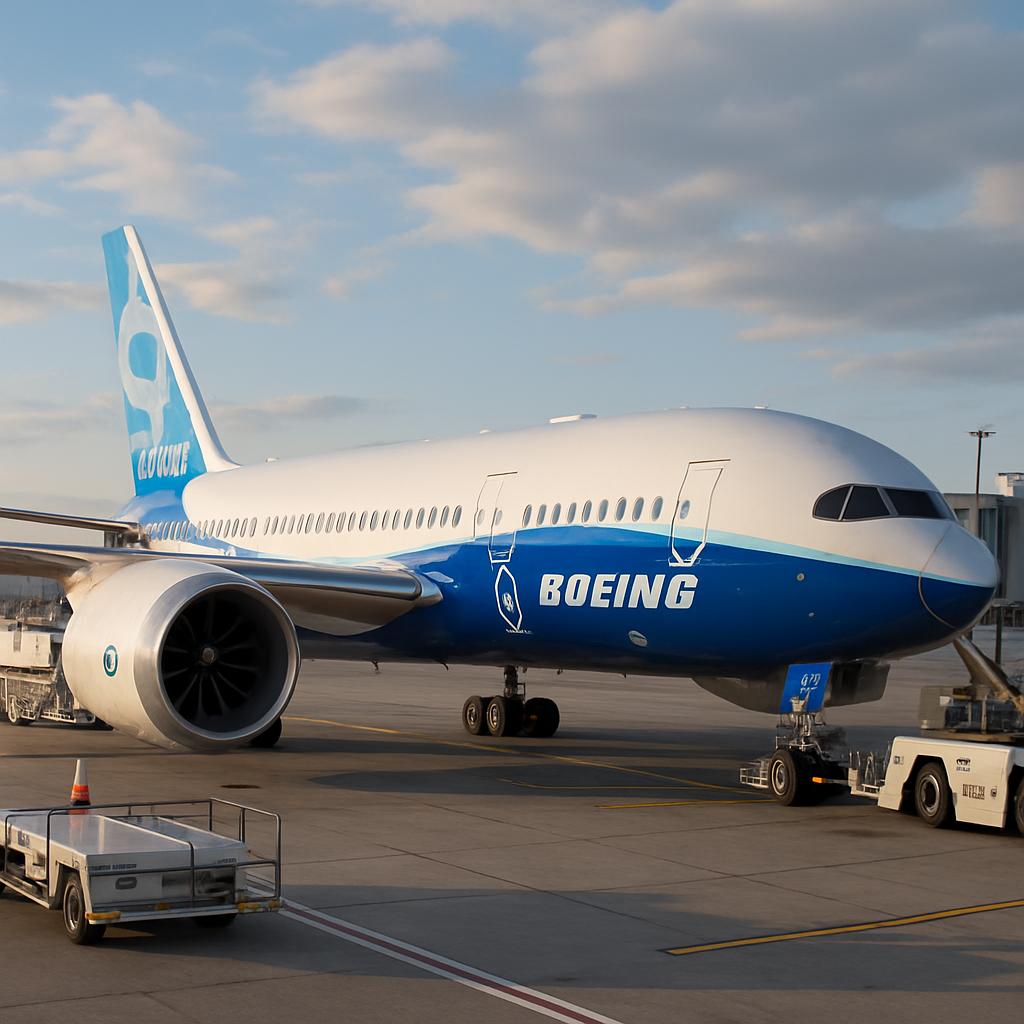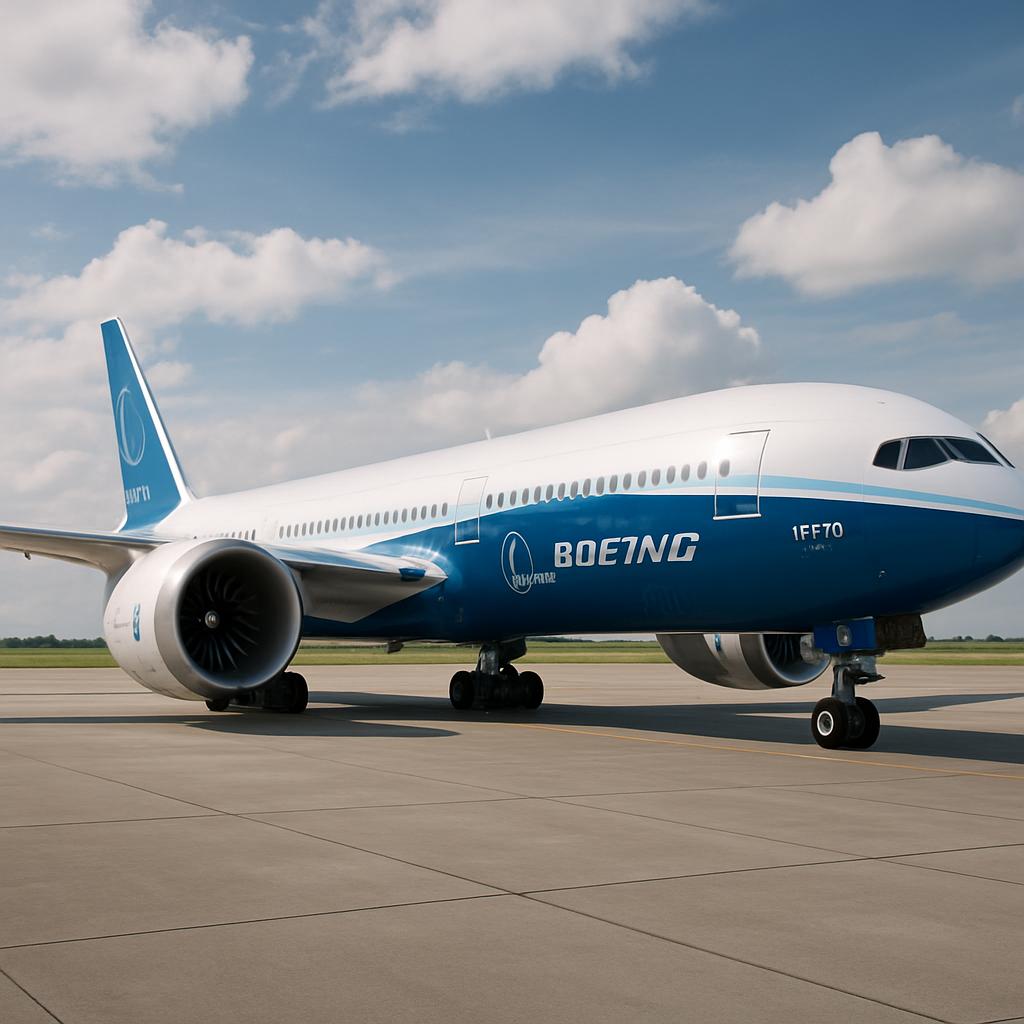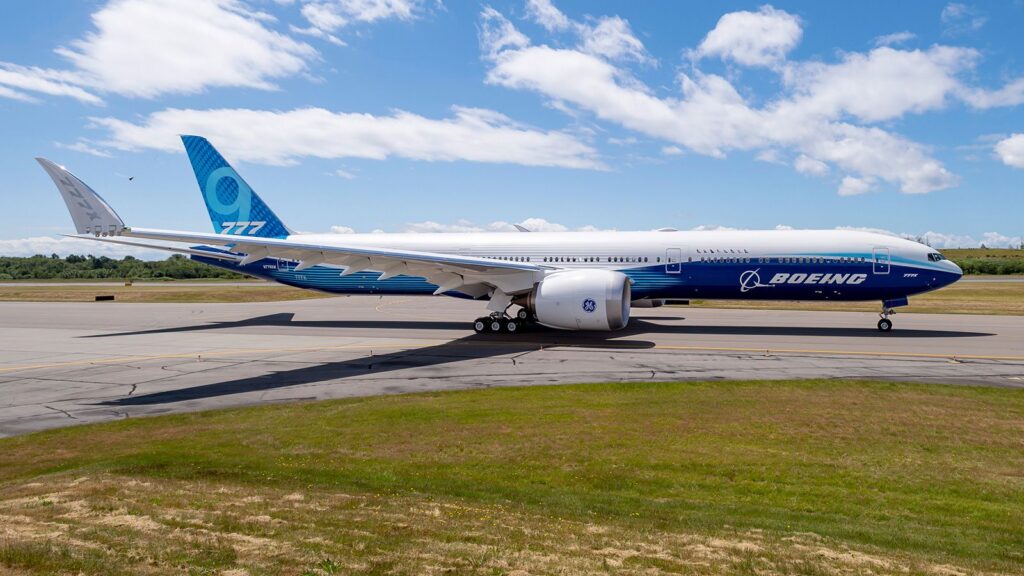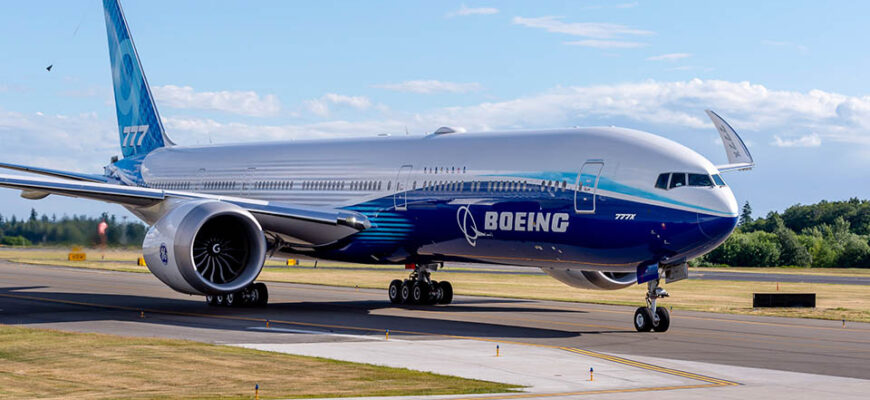The aviation world is already talking about the New Boeing 777 (2026) — the future of aviation is already here! Price and overview, and for good reason: this aircraft represents years of incremental improvements and a few genuine leaps in technology that are poised to reshape long-haul flying.
- Why the 777 continues to matter
- Design and aerodynamics: a familiar silhouette, rethought
- Engine technology: the heart of the leap
- Cabin experience: comfort meets modern expectation
- Avionics, automation and pilot interface
- Safety advances you won’t see, but will feel
- Environmental impact and sustainability commitments
- Variants and mission flexibility
- Quick variant snapshot
- Price: list price vs. real cost
- Financing and acquisition options
- Operating economics: what carriers will see
- Maintenance, repair and overhaul (MRO) considerations
- Airport and ground operations: what changes for infrastructure
- Market impact and competitive landscape
- Real-world adoption: what airlines can expect
- Regulatory and certification landscape
- My firsthand perspective: the view from airshows and operator briefings
- Risks and uncertainties to watch
- Secondary market and lifecycle considerations
- How passengers will notice the difference
- Futureproofing fleets: digital twins and continuous improvement
- What to expect in the early years of service
- Is this the right aircraft for your airline?
- Final thoughts on timing and adoption
Why the 777 continues to matter
For three decades the 777 family has been the backbone of long-haul fleets, prized for its range, payload and operational flexibility. Airlines rely on big twins to knit the globe together — from transpacific routes to high-capacity trunk services — and the latest 777 evolution is designed to keep that role well into the mid-21st century.
This new iteration is not merely a facelift. It brings structural advances, new engines, updated cabins and flight systems that collectively reduce operating costs and emissions per seat. That combination matters to airline CFOs, airport planning teams, and passengers who demand comfort on long flights.
Design and aerodynamics: a familiar silhouette, rethought
At first glance the New Boeing 777 retains the long, graceful silhouette that made its predecessors instantly recognizable. Look closer and you’ll find meaningful changes: a redesigned wing with greater span, improved airfoil shapes, and — in some variants — folding wingtips that allow the aircraft to keep a larger aerodynamic footprint in flight while fitting existing gates on the ground.
Those folding wingtips are an elegant engineering answer to a common airport constraint. They permit a wider, more efficient wing when airborne and a compliant wingspan on ramps and taxiways. The benefit is lower drag in cruise and better fuel efficiency without forcing airports into costly infrastructure changes.
Materials science plays a subtle but crucial role. Boeing has expanded the use of composites and advanced alloys to shave weight while maintaining strength. The lessons learned from previous composite-wing programs allowed engineers to push for higher aspect ratios — long, slender wings — which improve lift-to-drag ratios and reduce fuel burn at cruise.
Engine technology: the heart of the leap
Powering the new 777 generation are next‑generation high‑bypass turbofans developed to deliver more thrust with less fuel consumption. These engines feature larger fan diameters, advanced fan blades, ceramic matrix composites in hot sections, and optimized thermodynamic cycles aimed at improved specific fuel consumption and longer maintenance intervals.
In practical terms, that translates into significant reductions in fuel burn per seat compared with older widebodies. For airlines, even single-digit percentage improvements compound into millions of dollars saved annually on large fleets, while for passengers it helps lower the environmental footprint of an individual flight.
Noise reduction has also been a design target. These engines use acoustic liners and carefully tuned turbine stages to cut perceived noise on takeoff and landing, supporting airport community relations and enabling more flexible operation windows at noise-restricted airports.
Cabin experience: comfort meets modern expectation
Passengers will notice a difference from the moment they step aboard. Boeing focused on cabin width and window placement, bringing larger panorama-style windows and improved daylighting to the main deck. These changes reduce fatigue and make the cabin feel more open — small psychological improvements that matter on journeys of eight hours or more.
Seating configurations will vary by airline, but Boeing has optimized internal systems to support denser seating without sacrificing individual comfort. New environmental control systems provide better cabin pressurization and humidity management, reducing dehydration and jet lag for passengers traveling across multiple time zones.
In premium cabins, the airplane supports suites and fully enclosed doors that airlines increasingly offer to compete on transoceanic routes. The integrated in-flight entertainment and connectivity packages will be ready for ultra-long-haul operations, including satellite broadband capable of streaming and business-class conferencing.
Avionics, automation and pilot interface
The flight deck blends familiar controls with modern automation. Boeing has incrementally advanced its avionics suite to offer pilots clearer situational awareness, improved flight-path optimization and better integration between flight management systems and air traffic management data streams.
Automation is not about replacing pilots; it’s about making routine tasks more predictable so crews can focus on complex decision-making. Enhanced vision systems, synthetic runway overlays, and resilient data links bolster safety in challenging weather or high-traffic terminal environments.
For operators, a consistent type rating across some 777 variants reduces training overhead and improves crew scheduling flexibility. That continuity is an operational advantage when airlines mix older 777s with the new generation during fleet transition periods.
Safety advances you won’t see, but will feel
Safety is built into every structural panel, system architecture and maintenance routine. The new 777 incorporates greater system redundancy, improved fault isolation, and better diagnostics to surface potential issues earlier. Predictive maintenance algorithms help airlines plan ground checks before problems emerge.
Crashworthiness and emergency systems have been refined, but the quieter story is the continuous feedback loop between in-service data and engineering updates. Operators and manufacturers collaborate closely to iterate software updates and component refinements, reducing the risk of unexpected failures over an aircraft’s decades-long life.
Environmental impact and sustainability commitments
The industry’s climate goals create real pressure to reduce CO2 and non‑CO2 effects from aviation. The new 777 family aims to lower fuel burn and carbon emissions per passenger kilometer, which is the most direct lever airlines have today. Improvements in engine efficiency, aerodynamic refinements and lighter structures all contribute to measurable reductions in lifecycle emissions.
Compatibility with sustainable aviation fuels (SAF) has also been central to the program. The engines and fuel systems are certified to run on blend levels that make practical use of SAF possible from day one, helping airlines reduce their net lifecycle emissions depending on the fuel source they procure.
Still, aircraft alone cannot solve aviation’s climate challenge. Fleet renewal must be paired with SAF scale-up, operational improvements like continuous descent approaches, and supportive policy frameworks. The new 777 makes fleet renewal a meaningful part of that broader strategy.
Variants and mission flexibility
Boeing’s approach has been to offer multiple variants to serve different airline needs: a higher-capacity, shorter-range variant for dense hub-to-hub routes and a longer-range, lower-capacity version for thin, ultra-long sectors. That flexibility helps airlines tailor capacity to market demand without compromising efficiency.
Freight operators also see value in the 777 platform. The passenger-to-freighter conversion market for widebodies is robust, and the structural strength and payload capability of the new 777 variants make it attractive for cargo operations, both as factory freighters and future P2F conversions.
Quick variant snapshot
Below is a concise comparison of the primary variants that Boeing is positioning in this family. Numbers are manufacturer-provided or widely reported industry figures and should be treated as representative rather than final; delivery specifications can shift during certification and airline-specific configurations.
| Variant | Typical two-class seating | Approximate range | List price (approx.) |
|---|---|---|---|
| 777-9 (high capacity) | ~400–450 | ~7,000–7,500 nmi | $420–$450 million |
| 777-8 (long range) | ~350–400 | ~8,000–9,000 nmi | $390–$420 million |
List prices are publicized baseline figures and rarely reflect the final transaction price; airlines typically negotiate substantial discounts, especially on large orders. The table is meant to help compare scale and mission capability across variants.
Price: list price vs. real cost
When people ask about price, they usually mean one of two things: the manufacturer’s list price — a public figure used for accounting — or the actual price an airline pays after negotiating discounts, financing arrangements, trade-ins and bulk-order concessions. The New Boeing 777 (2026) — the future of aviation is already here! Price and overview — that’s the shorthand, but real payments are more complex.
List prices for modern widebodies often exceed $300–$400 million, depending on the variant and year. However, airlines rarely, if ever, pay list price. Negotiated discounts can range from modest to substantial, influenced by order size, delivery slots, customer leverage and long-term service packages.
Beyond the purchase price, operators evaluate lifecycle costs: fuel consumption, maintenance man-hours, parts pricing, crew training, and residual value. A slightly higher purchase price can be justified by lower fuel burn and reduced maintenance costs over 20–25 years of service. Fleet planners run total cost of ownership (TCO) models that project cashflows and break-evens over aircraft lifetimes.
Financing and acquisition options
Airlines access widebodies through a mix of strategies: direct purchase, sale-leaseback, operating leases, and financing packages backed by export credit agencies. Lessors play a central role in the market, buying aircraft and leasing them to carriers to manage balance sheet exposure and fleet flexibility.
Sale-leaseback deals are especially common for legacy carriers that need liquidity. In those arrangements, an airline sells an aircraft it owns to a lessor and immediately leases it back, freeing capital while retaining operational control. For new deliveries, manufacturers often work with banks and export agencies to provide favorable financing on large orders.
Lease rates vary widely with aircraft age, demand for specific types, and macroeconomic factors. For airlines aiming to modernize fleets without large upfront capital outlays, leasing remains an attractive path to acquire new 777 models while maintaining financial agility.
Operating economics: what carriers will see
Operational savings are the chief selling point. Fuel accounts for a large portion of variable operating costs on long-haul flights, so improvements in fuel efficiency directly impact economic viability. The new 777 family targets double-digit percentage gains in fuel burn compared with older widebodies, depending on mission profile and seat layout.
But economics are multidimensional. Improved dispatch reliability, longer maintenance intervals and quicker turnaround procedures all add value by improving aircraft utilization. Higher daily utilization spreads fixed costs across more trips, lowering cost per available seat mile (CASM) — a key metric for airline profitability.
Resale value and fleet flexibility further affect total cost assessments. Aircraft that remain efficient longer, and that can be repurposed for cargo or niche markets, retain market value better, smoothing balance sheet risk for both airlines and lessors.
Maintenance, repair and overhaul (MRO) considerations
Modern aircraft design reduces scheduled maintenance through better corrosion resistance, longer-life components, and predictive health monitoring. The new 777 includes richer onboard diagnostics, enabling technicians to detect wear and anomalies earlier and schedule maintenance more efficiently.
That doesn’t mean less work for MRO shops — it changes the work. Maintenance moves from reactive troubleshooting to planned interventions and data-driven component swaps. Airlines and MRO providers will invest in digital systems and training to fully leverage predictive maintenance benefits.
Supply chain readiness matters. New materials and parts require calibrated inventories and trained technicians. Operators that plan carefully with MRO partners will minimize downtime during the early years of the aircraft’s service life when teething issues and retrofits can be most disruptive.
Airport and ground operations: what changes for infrastructure

Airports will welcome efficiency improvements that reduce fuel burn, noise and emissions. However, some features such as larger wingspans — even with folding wingtips — can challenge gate planning and taxiway clearances at facilities optimized for older fleets.
Ground handling systems, from jet bridges to tow tractors, will adapt incrementally. Operators and airports often coordinate before introducing a new type into a market, running compatibility checks with passenger boarding bridges and ground service equipment to ensure smooth turnarounds.
Airports that invested in improved surface movement guidance, ground power units, and rapid refueling infrastructure will see the operational gains translate into better on-time performance and potentially increased route capacity.
Market impact and competitive landscape
The updated 777 family competes in a large widebody market that includes aircraft from Airbus and other manufacturers. Its competitiveness stems from the combination of capacity, range and per-seat economics that many carriers require for transoceanic and high-demand trunk routes.
For some airlines, the new 777 replaces older three- and four-engine types, unlocking immediate economic benefits. For others, it bridges the gap between ultra-large twin-aisles and smaller long-range aircraft, providing an option that can be right-sized to route demand while retaining cargo capacity.
The aircraft’s entry also pressures competitors to accelerate their own upgrades, creating a ripple effect that advances technology across the fleet landscape. Passengers win through better comfort and connectivity, while airports and pilots benefit from more efficient and predictable operations.
Real-world adoption: what airlines can expect
Airlines that place early orders for new widebodies typically plan carefully around delivery slots, route launches, and support commitments. Early adopters gain marketing and capacity advantages but must absorb initial operational learning curves.
In practical terms, customers will sequence deliveries to match network needs. A carrier launching a new ultra-long-haul route will prioritize long-range variants, while a hub-and-spoke operator focusing on dense international trunk routes might opt for higher-capacity versions to maximize revenue per flight.
Working examples from past fleet introductions show that airlines pairing new aircraft with refreshed onboard products and carefully staged crew training tend to transition faster and offer a better passenger experience from day one.
Regulatory and certification landscape
Large aircraft programs undergo rigorous certification by aviation authorities such as the FAA and EASA. That process includes structural tests, engine performance trials, avionics validation and flight tests across many operational conditions.
Certification timelines are influenced by test outcomes, supply chain maturity, and any software or systems issues discovered during trials. Airlines and lessors watching the program closely plan fleet retirements and lease returns around certification milestones to avoid capacity shortfalls.
Regulators increasingly scrutinize new technologies such as electrical systems and flight automation logic. Robust validation and transparent data sharing between manufacturers and authorities help streamline certification and maintain public confidence.
My firsthand perspective: the view from airshows and operator briefings
As a writer who has attended airshows and spent time in briefing rooms with fleet planners, I’ve seen how excitement around a new widebody mixes with sober calculation. The applause at a public unveiling is one thing; the spreadsheet comparisons and airport compatibility studies that follow are where the real decisions happen.
Fleet managers ask the same core questions: How will this aircraft change our unit costs? Can we maintain flexibility during economic swings? What will customers notice and how will it affect demand on our routes? Those practical concerns guide most purchase decisions more than headline performance figures.
From the conversations I’ve had, carriers value the combination of higher efficiency and incremental comfort improvements. For many, the new 777 family is the practical way to modernize a fleet while preserving route economics that are still crucial in the post-pandemic travel recovery.
Risks and uncertainties to watch
No aircraft program is risk-free. Certification delays, supplier issues, and unforeseen technical problems can push delivery schedules and increase costs. Airlines must balance the benefits of introducing new types against the risk of schedule slippage, which can disrupt capacity planning.
Market demand volatility is another factor. Economic downturns or sharp changes in travel patterns can leave airlines with temporarily mis-sized fleets. Flexible leasing and adaptive network planning are common hedges against those risks.
Finally, the pace of alternative propulsion research — including hydrogen and electric propulsion for short to medium-haul segments — could shift long-term expectations. For now, widebodies remain dependent on hydrocarbon fuels, but the industry’s trajectory could change over the next two decades.
Secondary market and lifecycle considerations
Widebodies have long lifecycles, often serving airlines and lessors for 25 years or more. The secondary market determines residual values and affects leasing rates and fleet replacement timing. Aircraft that offer fuel savings and flexibility maintain stronger resale value.
Operators also plan for mid-life retrofits and cabin refurbishments to keep interiors competitive. Payload retention, structural fatigue life and maintainability play into decisions about when to retire an aircraft or convert it to freighter configuration.
Leasing companies looking at the new 777 family evaluate not only delivery schedules but also the expected appetite for used aircraft in a decade. Historically, efficient, reliable widebodies retain demand for cargo conversions and for carriers in regions with growing travel demand.
How passengers will notice the difference
From a traveler’s perspective, the improvements are tangible but not flashy. Larger windows and better cabin air, quieter takeoffs, and more reliable onboard internet make a long trip less taxing. For premium travelers, new suite products and improved inflight service capabilities offer a clear upgrade.
Economy-class innovation focuses on comfort and connectivity: slimmer seat designs with better support, more personal storage, and power at every seat help make long flights bearable. Airlines will use these incremental gains to distinguish their products in a competitive market.
Ultimately, passengers measure value by the total journey experience. Faster boarding, on-time performance and a quieter cabin matter as much as seat pitch or screen size. These are the areas where operational improvements linked to the new 777 translate into better customer satisfaction.
Futureproofing fleets: digital twins and continuous improvement
One of the less visible benefits of the new program is the integration of digital twin technologies that model aircraft behavior across their lifecycle. By simulating loads, wear patterns and maintenance needs, airlines and manufacturers can optimize parts replacement and predict when service interventions will be necessary.
That capability reduces unscheduled maintenance and allows for more efficient spare-part inventories. For operators with large networks, those savings can turn into measurable improvements in aircraft availability and route reliability.
Continuous improvement loops, backed by real-time data, also enable faster incorporation of software updates and minor hardware upgrades. The net effect is an aircraft that evolves in service rather than being static at delivery.
What to expect in the early years of service
Early operators typically experience a mix of enthusiasm and cautious pragmatism. Initial delivery batches focus on ironing out issues encountered during flight testing and early operation. Airlines and MRO partners work together to refine procedures and streamline maintenance checklists.
Passengers on inaugural routes get a glimpse of the future cabin experience, while frequent flyers and industry watchers scrutinize operational reliability and dispatch rates. Early data on fuel efficiency and maintenance trends determine how quickly airlines expand deployments.
Over the first five years, the airframe and support ecosystem stabilize, returning predictable operational metrics that fleet planners can map into long-term network strategies.
Is this the right aircraft for your airline?
That question depends on a carrier’s network, demand profile, and financial posture. For airlines operating dense long-haul networks or launching ultra-long sectors, the new 777 provides a compelling mix of capacity and range that few other types match without resorting to complex fleet mixes.
Smaller carriers with thinner long-haul routes may find smaller long-range twins more economical. However, the 777’s cargo potential and flexibility to reconfigure interiors can make it attractive even to airlines evaluating mixed passenger-cargo models.
In short, it’s a strategic decision: the airplane offers a broad toolkit, and the right fit depends on route economics, financing options and the carrier’s appetite for lifecycle modernization.
Final thoughts on timing and adoption

By 2026 the New Boeing 777 family will likely be entering regular service with airlines that planned early and positioned their support networks accordingly. The model balances evolutionary advances in aerodynamics, propulsion and cabin technology with the pragmatic needs of airline operations.
Adoption will not be immediate across the industry; fleet renewal is capital-intensive and requires careful timing. But for operators committed to sustaining or growing long-haul capacity, the aircraft offers a compelling value proposition that aligns with current environmental and commercial pressures.
If you follow aviation closely, the new 777 represents a logical next step rather than a disruptive revolution — a machine built to serve the networked world more efficiently, quietly and comfortably.
Interested in more deep dives and the latest updates on aviation and technology? Check out other materials on our website: https://themors.com/technology-innovation-news/










